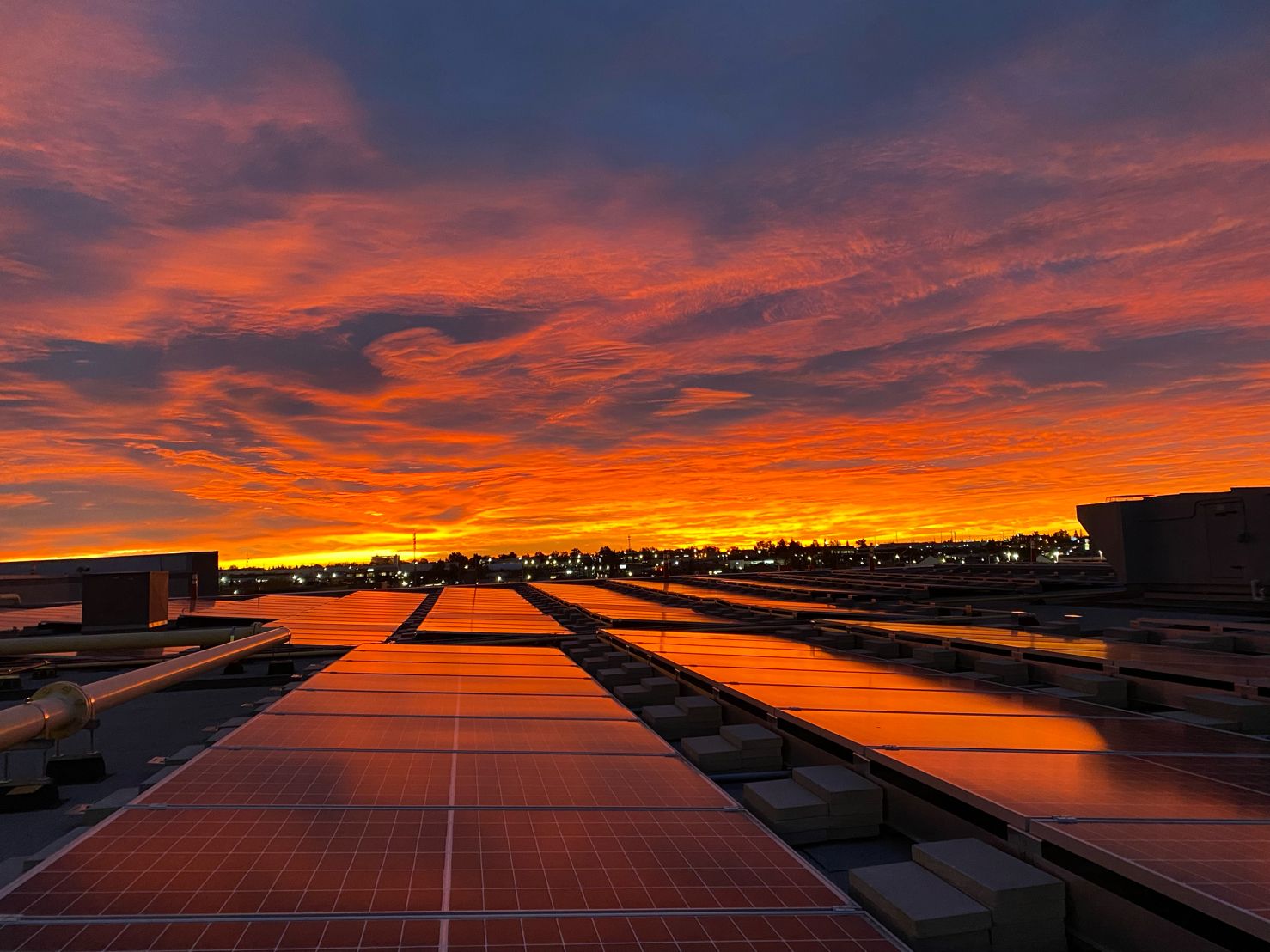Strategic Area
Smart Grid Demonstration
Status
Complete
Partners
Cadillac Fairview
Alberta Innovates
Fund
Green Infrastructure
Year
2018
GI Contribution
$1.69 M
Project Total
$4.78 M
Location
Calgary, AB
Find out more
More about this project
2022 CIGRE Canada Conference: Paper 522
Lead Proponent
ENMAX Power Corporation
Project Background

Photovoltaic Solar Array installed at the Chinook Centre. Photo courtesy of Cadillac Fairview
-
Text version
An array of Solar Photovoltaic panels installed by Cadillac Fairview as part of the ENMAX Power Corporation (ENMAX) project. ENMAX aims to lower the economic barrier for customers to invest in more renewable energy generation, and to support increased penetration of clean energy in the City of Calgary, with a goal to lower greenhouse gas (GHG) emissions and increase grid resiliency. NRCan provided funding to ENMAX through its Smart Grid Program whose goals include increased grid electrification efforts throughout Canada.
The goal of the Secondary Network Export Project (SNEP) was to develop and demonstrate a new solution to accommodate bi-directional power flows on urban electrical grids. Using a combination of advanced monitoring and controls as well as protective relay configuration changes that allow for export, the proposed project will demonstrate how solar PV, and ultimately other forms of distributed generation and energy resources, can be safely integrated into secondary and spot networks. This can ultimately help unlock the untapped potential for urban centers, such as the city of Calgary, to allow generation from renewable and distributed energy by removing technical and financial barriers.
High-level project objectives set out by ENMAX Power, and project partners, included:
- A repeatable technical solution, control strategy and safety protocols for the integration of distributed power generation on secondary networks within urban electricity grids;
- Demonstration of potential business cases to accelerate the adoption of customer-owned generation from cleaner, more efficient energy sources;
- A more flexible and sustainable grid allowing for a cleaner mix of generation overall;
- Increased grid resiliency; and
- Providing urban electricity customers the option to export power such as solar PV or other generation technologies onto secondary networks within the distribution grid to ultimately reduce electricity costs and generate revenue.
Results
The primary challenge for SNEP was to find a solution to allow reverse power flow while maintaining system reliability and safety. This limitation of secondary networks also exists in nearly all urban networks across North America. ENMAX Power demonstrated not a single technology, but the integration of multiple technologies to enable customer-owned DER generation into a secondary network. ENMAX Power is the first utility in Canada to successfully provide a solution to this complex technical challenge. Some key achievements include:
- SNEP has allowed the customer's DER to achieve full export capacity for their installed system. SNEP directly improved the flexibility and DER hosting capacity of the secondary network distribution system by enabling energy export from customer-owned solar PV generation, which was not previously possible.
- The project site host, CF, saved in total energy costs from September 1, 2022, to August 31, 2023. These savings are divided into two parts: micro-generation credits and avoided energy costs.
- This design is also DER-type agnostic, meaning it can be used for renewable technologies such as solar PV, energy efficiency technologies such as combined heat and power systems, or in the future vehicle-to-grid applications. The broader implications of this are that customers will be able to export power from whichever type of DER technology they prefer.
- In addition to enabling bi-directional power flow in the secondary network systems, SNEP also proved that communication could be directly established with a customer's DER system to monitor and control how the DER operates in real time.
Benefits to Canada
Benefits to Canadians:
- Maturation and knowledge dissemination of a solution that can be replicated at utilities throughout Canada, reducing technical and economic barriers to the increased adoption of distributed generation on secondary networks within urban electrical distribution systems;
- Training of Highly Qualified Persons (HQP) and inclusive job creation within Alberta;
- Reduction to direct and indirect GHG emissions through increased small-scale DERs; and
- Improved asset utilization, increased flexibility, resiliency, and reliability as distributed generation is permitted on secondary networks.
Benefits to customers deploying DERs, and broader utility industry stakeholders:
- Economic benefits as grid upgrade expenses are reduced through successful integration of DER;
- An additional revenue stream for customers connected to the secondary network by enabling them to size their systems to support building needs and sell additional electricity back to the grid.
- Reduction of technical barriers preventing new revenue opportunities for DER resources on secondary networks; and
- A pathway towards diversifying generation, increasing resilience and reliability.
- Broader deployment of DERs on secondary networks to reduce peak electricity demand with renewable generation while enabling GHG emission reductions.
Next Steps
SNEP was successfully operational in April 2022 and completed in June 2023. ENMAX Power will continue to test and monitor the project performance with ongoing operations, with the goal of making the technology available to customers in Calgary’s downtown and similar high-density areas. This project has helped to modernize key components of ENMAX Power’s distribution system, as the organization explores further innovative projects that will build on these learnings. Initially, this will be demonstrated using Solar Photovoltaics (PV), but can be expanded to include other types of generation and resources. The successful application of this technology will help remove technical and financial barriers to distributed generation, giving residential and commercial customers in urban settings more choice in how they generate and use electricity, while reducing greenhouse gas emissions (GHGs).